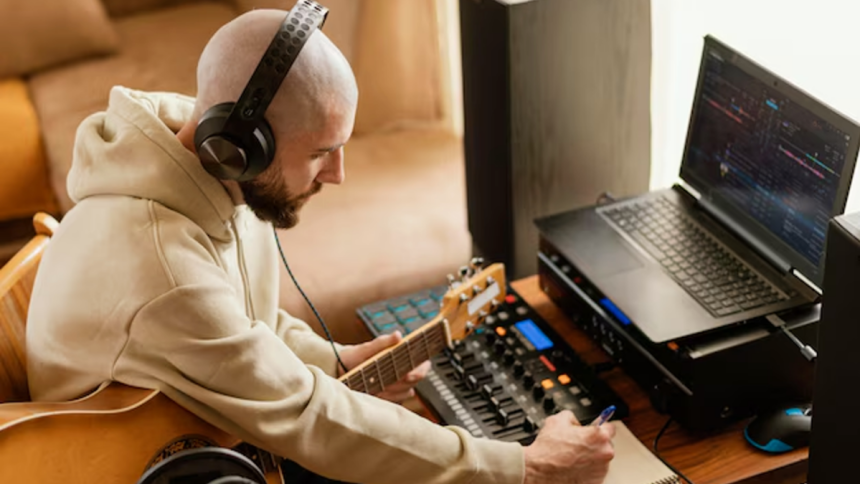Ever stumbled across the term “EP” while exploring your favorite artist’s music and wondered what it means? You’re not alone! EPs have become a buzzword in the music world, blending creativity and strategy in a way that keeps both artists and fans hooked. Whether you’re an artist planning your next release or a fan trying to understand your playlist better, this guide is here to simplify everything about EPs. Let’s dive in and decode the mystery behind this musical term!
What Does EP Stand For?
EP Defined
EP stands for “Extended Play.” It’s a musical release that’s longer than a single but shorter than a full-length album (LP). Typically, an EP includes about 3-5 tracks, offering just enough content to give listeners a taste of an artist’s style without the commitment of an album.
Origin of the Term
The term EP has its roots in the vinyl era, where it referred to records that held more tracks than a single but less than an LP. Over time, the term stuck and evolved, adapting to the digital age.
The Difference Between EPs, LPs, and Singles
EP vs. LP
An LP, or “Long Play,” is essentially a full album, usually containing 8-12 tracks. While LPs are a deep dive into an artist’s work, EPs are more like a teaser, perfect for those who want a shorter listening experience. You can read more articles on Sajfm website.
EP vs. Single
A single usually consists of just one or two tracks, focused on promoting a specific song. An EP, on the other hand, offers a mini collection of songs, often centered around a theme or concept.
Why Do Artists Release EPs?
Creative Freedom
EPs allow artists to experiment with new sounds or themes without the pressure of creating a full album. It’s a playground for creativity!
Budget-Friendly
For emerging artists, producing an EP is a cost-effective way to showcase their talent. It requires less time and resources compared to a full-length album.
Fan Engagement
EPs are a great way to keep fans engaged between album releases. They provide fresh content without a long wait.
How Long is an EP?
Typical Track Count
An EP generally includes 3-5 tracks. Some may stretch to 7 tracks, but the key is that it’s shorter than an album.
Runtime
Most EPs have a runtime of 15-30 minutes, making them perfect for listeners who want a quick but fulfilling music session.
The Role of EPs in Modern Music
Streaming and EP Popularity
With the rise of streaming platforms like Spotify and Apple Music, EPs have gained a new life. Shorter releases align perfectly with listeners’ evolving habits and shorter attention spans.
Emerging Artists’ Tool
EPs act as a stepping stone for new artists. They help build a fanbase and provide a glimpse into the artist’s potential.
Iconic EPs
Many iconic artists have used EPs to cement their legacy. For example, The Weeknd’s Trilogy started as three EPs before becoming a full-fledged phenomenon.
Creating an EP: A Step-by-Step Overview
Step 1: Decide on a Theme
Think about the story or vibe you want to share with your listeners. A cohesive theme makes the EP more impactful.
Step 2: Choose the Tracks
Pick 3-5 songs that fit your theme. These tracks should represent your style and what you want to showcase.
Step 3: Produce the Music
Work on the recording and production process. This includes mixing and mastering the tracks for a polished finish.
Step 4: Plan Your Release
Decide on the release strategy, whether it’s a surprise drop or a planned launch with teasers. Use social media and streaming platforms to generate buzz.
EPs in Different Music Genres
Pop and Rock
In pop and rock, EPs are often used to test new sounds or reintroduce an artist after a break. They also help indie artists gain traction.
Hip-Hop
Hip-hop artists frequently drop EPs to keep their audience engaged between larger projects or to respond to trending topics available on https://sajfm.com/.
Electronic
In electronic music, EPs often showcase collaborations or experimental tracks, giving listeners a taste of what’s to come.
Famous EPs and Their Impact
Notable Examples
- The Beatles’ Long Tall Sally EP showed their versatility during their early years.
- Hozier’s Take Me to Church EP became a viral hit, paving the way for his debut album.
Cultural Impact
These EPs not only shaped careers but also influenced musical trends, proving the format’s significance.
Conclusion
EPs are the sweet spot between singles and albums, offering artists a chance to explore, experiment, and connect with their audience in a meaningful way. They’re versatile, cost-effective, and perfectly suited for today’s fast-paced music world. Whether you’re discovering new music or planning your own release, understanding EPs can enrich your musical journey.
Lynn Martelli is an editor at Readability. She received her MFA in Creative Writing from Antioch University and has worked as an editor for over 10 years. Lynn has edited a wide variety of books, including fiction, non-fiction, memoirs, and more. In her free time, Lynn enjoys reading, writing, and spending time with her family and friends.















